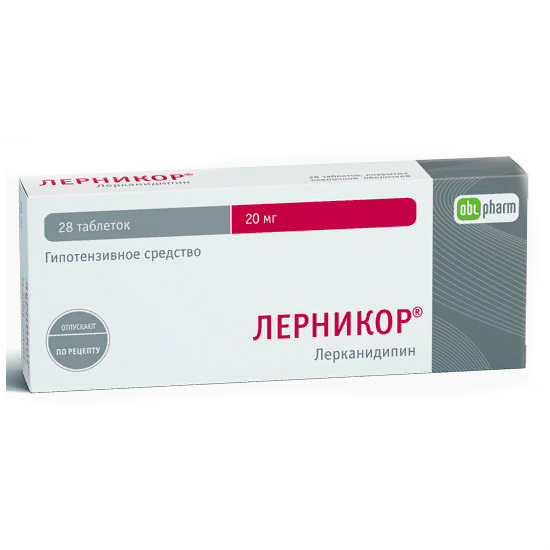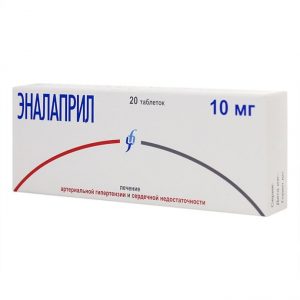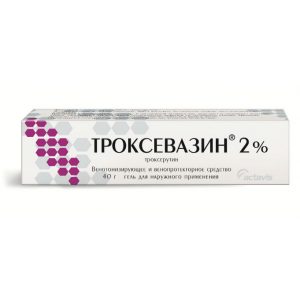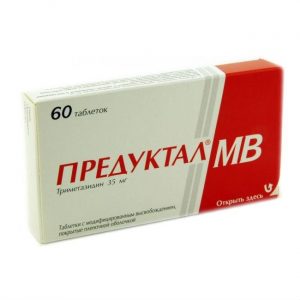Description
Pharmacological action
Pharmacological action – hypotensive.
Pharmacodynamics
Lercanidipine is a selective BKK (derivative of 1,4-dihydropyridine), inhibits the transmembrane flow of calcium ions into the smooth muscle cells of blood vessels.
Lercanidipine is a racemic mixture of (+) – R – and (-) S-enantiomers. The antihypertensive effect of lercanidipine is primarily due to the S-enantiomer. The mechanism of the antihypertensive effect of lercanidipine is due to the direct relaxing effect on vascular smooth muscle cells, resulting in a decrease in OPS.
Despite the relatively short T1 / 2 from blood plasma, lercanidipine has a prolonged antihypertensive effect due to the high coefficient of membrane distribution. Due to the high vascular selectivity does not have a negative inotropic effect. Acute arterial hypotension with reflex tachycardia rarely occurs due to the gradual development of vasodilation with lercanidipine.
Lercanidipine is metabolically neutral and does not significantly affect serum lipoproteins and apolipoproteins, nor does it alter the lipid profile in patients with arterial hypertension.
Pharmacokinetics
Absorption
Lercanidipine is completely absorbed after oral administration. Cmax in blood plasma is reached after 1.5 ² 3 h and is (3.3 ± 2.09) and (7.66 ± 5.9) ng / ml after taking 10 and 20 mg of lercanidipine, respectively.
(+) – R- and (-) S-enantiomers of lercanidipine show a similar pharmacokinetic profile: have the same Tmax and T1 / 2 values ² ¹ ² ¹of Cmax and AUC 1.2 times higher for the (-) S-enantiomer. Interconversion of enantiomers in vivo experiments are not observed.
During the initial passage through the liver, the absolute bioavailability of lercanidipine when taken orally after a meal is approximately 10% when taken on an empty stomach, the bioavailability decreases by 1/3. When taking lercanidipine no later than 2 hours after eating fatty foods, its bioavailability increases 4 times, so lercanidipine should not be taken after meals. With oral administration of lercanidipine, its concentration in blood plasma is not directly proportional to the dose taken (nonlinear kinetics).
The saturation of the presystemic metabolism occurs gradually. Thus, bioavailability increases with increasing dose.
Distribution
Distribution from blood plasma to tissues and organs occurs quickly and extensively. Communication with plasma proteins exceeds 98%.
Metabolism and excretion of
Lercanidipine is metabolized by the CYP3A4 isoenzyme to form inactive metabolites.
About 50% of the dose taken is excreted by the kidneys (about 50% is excreted by the intestines). Elimination occurs mainly through biotransformation. The average T1 / 2 value is 8 ² 10 hours. The duration of the therapeutic effect is 24 hours.
Cumulation of lercanidipine with repeated ingestion is not observed.
Special clinical cases of
The pharmacokinetics of lercanidipine in elderly patients have been shown patients with renal insufficiency (Cl creatinine more than 30 ml / min) and in patients with mild and moderate liver failure is similar to the pharmacokinetics that are observed in the general patient population.
In patients with severe renal and / or liver failure due to a decrease in plasma protein concentration, the free fraction of lercanidipine may increase.
In patients with renal failure (creatinine Cl less than 30 ml / min) and in patients on hemodialysis, plasma concentrations of lercanidipine are higher (approximately 70%).
In patients with moderate to severe hepatic insufficiency, the systemic bioavailability of lercanidipine is likely to increase, since lercanidipine is metabolized primarily in the liver.
Indications
Grade 1 2 arterial hypertension.
Contraindications
Hypersensitivity to lercanidipine, another derivative of the dihydropyridine series or any component of the
preparation untreated chronic heart failure
unstable angina pectoris
left ventricular outflow tract obstruction
period within 1 month after myocardial infarction
severe liver failure
sr simultaneous use with potent inhibitors of CYP3A4 (ketoconazole, itraconazole, erythromycin, ritonavir, troleandomycin)
simultaneous use with qi losporinom
simultaneous with grapefruit juice
lactose intolerance, lactase deficiency, a syndrome of glucose-galactose malabsorption
use in women of childbearing age, not using reliable methods of contraception
pregnancy
period of breastfeeding
age up to 18 years (efficacy and safety have not been studied).
Precautions: renal failure (Cl creatinine> 30 ml / min) and / or mild and moderate hepatic impairment elderly elderly sinus node weakness syndrome (without pacemaker) coronary heart disease left ventricular dysfunction.
Special instructions
Special care should be taken when prescribing lercanidipine to patients with sinus node syndrome (without a pacemaker).
Despite the fact that studies with hemodynamic control did not reveal a deterioration in ventricular function when taking lercanidipine, caution should be exercised when prescribing lercanidipine to patients with left ventricular dysfunction.
It has been suggested that some dihydropyridines may be associated with a risk of increased angina attacks in patients with coronary artery disease. Therefore, in such patients, lercanidipine therapy should be carried out with extreme caution.
Influence on the ability to drive vehicles and work with mechanisms.
Since dizziness, asthenia, increased fatigue, and, in rare cases, drowsiness during the use of the drug may occur during treatment with the drug, patients should be especially careful in driving vehicles and engaging in other potentially dangerous activities that require a high speed of psychomotor reactions.
Composition
Film-coated tablets 1 tablet
active substance:
lercanidipine hydrochloride 10/20 mg
excipients:
MCC – 39/78 mg
lactose monohydrate – 30/60 mg
sodium carboxymethyl starch (sodium starch glycolate) – 15.5 / 31 mg srd 5/9 mg
magnesium stearate – 1/2 mg
film sheath (dosage 10 mg):
Opadry II 85F38107 yellow (polyvinyl alcohol – 1.2 mg, titanium dioxide – 0.6684 mg, macrogol (polyethylene glycol) – 0.606 mg, talc – 0.444 mg, aluminum varnish based on dye quinoline yellow – 0.0807 mg, iron oxide red – 0.0009 mg)
film coating (dosage of 20 mg):
Opadry II 85F34555 pink (polyvinyl alcohol – 2.4 mg, titanium dioxide – 1.4046 mg, macrogol (polyethylene glycol) – 1.212 mg, talc – 0.888 mg , aluminum varnish based on the Charming Red dye – 0.0348 mg, aluminum varnish based on the Solar Sunset dye yellow – 0.0336 mg, aluminum vy lacquer based dye azorubin – 0.027 mg)
Dosage and administration
Inside, at least 15 minutes before meals, preferably in the morning, without chewing, with plenty of water.
The recommended dose of the drug is 10 mg / day.
Depending on the individual tolerance of the drug to the patient, the dose may be increased to 20 mg. If necessary, an increase in the daily dose to 20 mg is carried out 2 weeks after the start of the drug.
The therapeutic dose is selected gradually, because maximum antihypertensive effect develops approximately 2 weeks after the start of the drug. It is unlikely that the effectiveness of the drug will increase with increasing doses of more than 20 mg / day, at the same time, the risk of side effects increases.
Special patient groups
Elderly.
Pharmacokinetic profile and clinical trial data show that elderly patients do not require dose adjustment of lercanidipine. However, caution should be exercised at the initial stage of treatment in this group of patients.
Impaired renal or hepatic function.
In the presence of renal (creatinine Cl more than 30 ml / min) or liver failure of mild or moderate severity, the initial dose is 10 mg, then it is increased with caution to 20 mg / day. The antihypertensive effect may be enhanced in patients with mild or moderate liver failure, and dose adjustment (reduction) may be required.
Overdose
Symptoms: peripheral vasodilation with a marked decrease in blood pressure and reflex tachycardia (presumably in case of an overdose of lercanidipine, symptoms similar to those with an overdose of other derivatives of dihydropyridine will be observed).
Treatment: symptomatic. In the case of a marked decrease in blood pressure, loss of consciousness, cardiovascular therapy is indicated, with bradycardia, iv administration of atropine.
There is evidence of 3 cases of overdose when taking lercanidipine in doses of 150, 280 and 800 mg for the purpose of suicide.
1. Take 150 mg of lercanidipine + alcohol (unspecified amount).
Symptoms: drowsiness.
Treatment: gastric lavage, administration of activated carbon.
2. Taking 280 mg of lercanidipine + 5.6 mg of moxonidine.
Symptoms: cardiogenic shock, severe myocardial ischemia, mild renal failure.
Treatment: prescription of cardiac glycosides, diuretics (furosemide), high doses of catecholamines, plasma substitutes.
3. Taking 800 mg of lercanidipine.
Symptoms: nausea and marked decrease in blood pressure.
Treatment: administration of activated charcoal and laxative, iv – dopamine.
In all cases of overdose, all patients remained alive.
Information on the effectiveness of dialysis for lercanidipine is not available. It is most likely that due to the high association of lercanidipine with blood plasma proteins, dialysis may be ineffective.
Storage conditions
At a temperature not exceeding 25 ° C
Keep out of the reach of children.
Expiration
3 years.
Terms and conditions
prescription
dosage form
tablets




